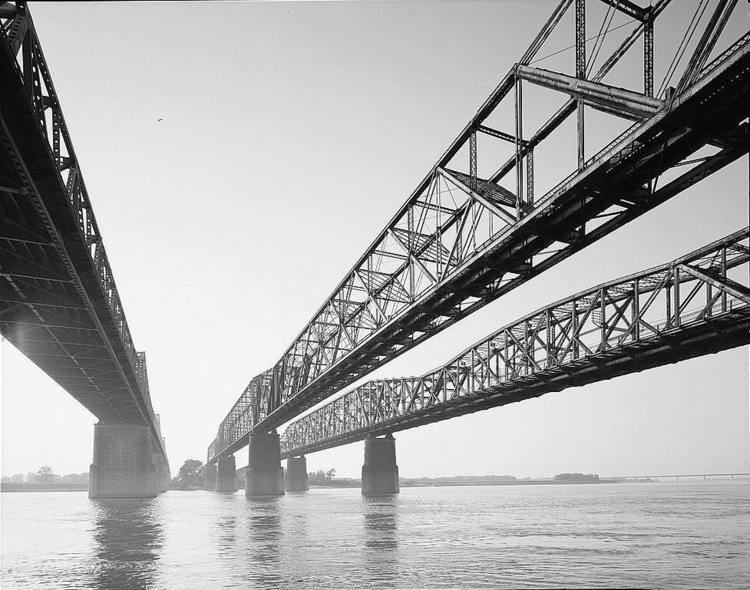Width 30 feet (9 m) Construction started 1888 Clearance below 33 m Location Memphis, West Memphis | Address Proctor, AR 72376, USA Opened 12 May 1892 Total length 1,490 m | |
 | ||
Bridge type Truss bridge, Cantilever bridge Similar Harahan Bridge, Memphis & Arkansas Bridge, Hernando de Soto Bridge, Pink Palace Museum, Belz Museum of Asian an | ||
Frisco bridge approach new west end sections at abutment
The Frisco Bridge, previously known as the Memphis Bridge, is a cantilevered through truss bridge carrying a rail line across the Mississippi River between West Memphis, Arkansas and Memphis, Tennessee.
Contents
- Frisco bridge approach new west end sections at abutment
- Origin at frisco bridges drone video 1 6 15
- Construction
- References
Origin at frisco bridges drone video 1 6 15
Construction
At the time of the Memphis bridge construction, it was a significant technological challenge and is considered to be chief engineer George S. Morison's crowning achievement. No other bridges had ever been attempted on the Lower Mississippi River.
The bridge is built entirely of open-hearth steel, a newly developed material at the time of construction. The structure features a 790-foot main span and two additional 600-foot spans. Its 65-foot height above the water was the highest clearance of any U.S. bridge of that era. The construction of the piers went nearly 100 feet below the water's surface.
Though some sources claim two cantilevered roadways were added to the bridge in the 1930s, one on each side, they probably confuse this bridge with the neighboring Harahan Bridge, which had two cantilevered roadways from 1917 until the Memphis & Arkansas Bridge opened in 1949. (The former roadway on the north side of the Harahan Bridge is now designated as Big River Crossing, having been refitted to carry pedestrian and bicycle traffic across the Mississippi River in 2016.) While the Frisco Bridge has not featured cantilevered roadways, pedestrians, buggies, and some automobiles used its main deck before the Harahan Bridge opened (the bridge was closed to such traffic while a train was crossing).
Construction for the Kansas City, Fort Scott and Memphis Railway, later acquired by the "Frisco," began in 1888 and was completed May 12, 1892. In the end the project created a bridge that was the farthest south on the Mississippi River, featured the longest span in the United States and cost nearly 3 million dollars.
A testament to its design and construction, as of 2014 the bridge is still used by BNSF Railway. The bridge is listed as a Historic Civil Engineering Landmark.
